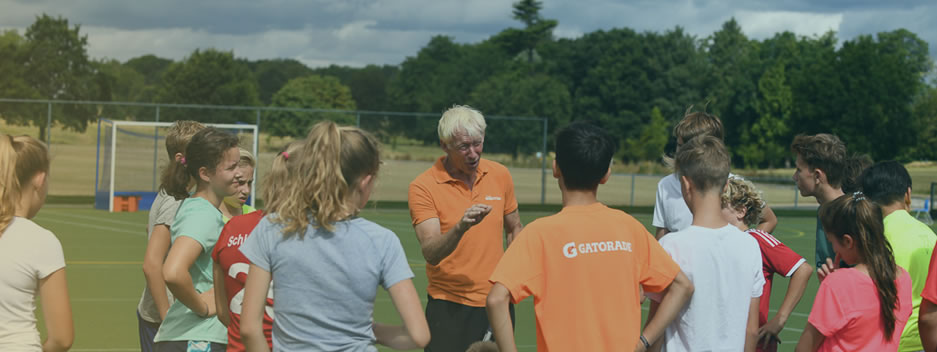The Three A's of Demonstrations
- November 13th, 2019
- Tom Bean

Demonstrations are an integral part of a coaching session but they're not as easy as they appear. The three A's - attention, accommodate and assess - are all vital to making it a success.
Split the process into three parts, how to get and keep their attention, accommodate every type of learner and assess how successful the practice was against the demonstration.
Discover each part and how to nail each one to take to your next session...
Attention
Holding a group's attention whilst you give a demonstration can make or break the success of the practice. Focus on these three aspects to maintain their minds:
Make Clear Points
Having the attention of the group is vital to getting your point across. Make sure your point is clear and concise to keep their attention and avoid their minds from wandering.
Make short statements that players can remember easily and so they don't drift mid-sentence.
Avoid Distraction
Before you start a demonstration, think about potential distractions which could draw their attention from your demonstration.
Where the sun is, other groups working in different areas and noise from adjoining sessions can all be potential distractions which you must protect against, whether it's the timing of a demonstration, location or your own positioning.
Think Positioning
Where you stand will impact how much your players will take in. Think of how you can best keep their attention through engaging with them visually and verbally.
Stay face on and close to ensure that the whole group hears the points you are making. By turning your back, it breaks the connection and allows players to attention to drift plus your voice will carry in the wrong direction.
Accommodate
Your players will all learn in different ways, therefore you must accommodate each with your demonstration.
Explain
Auditory learners like to learn through hearing instructions and reciting them out loud. Therefore when you make your demonstration, it's important to explain each point effectively whilst you show or draw the practice.
After explaining, it can be useful to ask questions of players to recite parts of the demonstration to facilitate their learning.
Show
During the demonstration, it's important to show the skills, movements and/or patterns of play either on a whiteboard or in person. To be able to see the demonstration, visual learners will be able to learn the ideas more effectively.
Giving them diagrams and presenting physical demonstrations allows these types of learners to visualise how they should perform the practice effectively, recognising the relationships between each part of the process.
Involve
Make use of your players during the demonstration. Being part of it will not only hold their attention more effectively and for longer, kinesthetic learners - who learn best by doing - will be able to get hands-on and learn through experimenting.
Do a run through of a specific practice with players in position, however make sure you are still aware of your positioning and/or distractions; when players spread out as part of the demonstration, these can be harder to control.
Assess
After the demonstration, allow the practice to run and see how it progresses. Assess whether the main aims of the practice have been met and if the demonstration was effective enough to make the practice work well.
Once you have assessed it, allow your players to give feedback. Ask them:
- How they thought the practice went?
- Whether it went how the demonstration intended?
- What happened differently and how should it have happened instead?
Allowing them to critique their own performance is important to firstly build confidence and allow leaders to grow within the group, but also to recognise how they can improve.
Once they have identified areas to improve, give your own feedback and a brief re-demonstration to refresh parts which needed improving.
It's best to summarise the demonstration in three bullet-points to prevent their being an overload of information for your players to think about before going back to the practice.
Demonstrations can be tough to tackle as a coach, you have a lot of information which you want to get over to your players but don't want to overload them so that your main points get missed.
Therefore, break down your demonstration, focussing on getting and keeping their attention, accommodating all members of the group with the way you demonstrate a practice and assessing it effectively to actually see some progress.
Think coherent points, think learning styles, think progression.